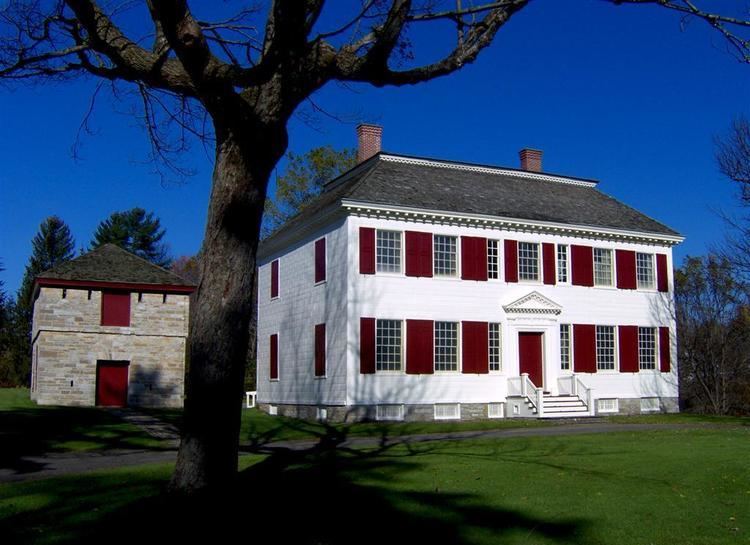Location Johnstown, New York NRHP Reference # 66000520 Opened 1763 Phone +1 518-762-8712 Added to NRHP 15 October 1966 | Built 1763 Designated NHL October 9, 1960 Area 9 ha | |
 | ||
Address 139 Hall Ave, Johnstown, NY 12095, USA Similar Schoharie Crossing State Hist, Herkimer Home State Hist, Oriskany Battlefield State Hist, Steuben Memorial State Hist, Clinton House Profiles | ||
Johnson Hall State Historic Site was the home of Sir William Johnson (1715–1774) an Irish pioneer who became the influential British Superintendent of Indian Affairs in the Province of New York, known for his strong relationship especially with the Mohawk and other Iroquois League nations.
Johnson Hall is located at Hall Avenue, West State Street and Johnson Avenue, in Johnstown, New York.
History
The house was built seven miles from the Mohawk River, close to Hall Creek. Hall Creek provided water sufficient to power a sawmill and later a grist mill. Built of wood, the house frame was covered with wood planks intended to simulate stone. Johnson engaged leading colonial architect Peter Harrison (1716-1775) to design the house; he hired the carpenter, Samuel Fuller, to build it. At least some of the ideas for the house came from the Builders' Companion magazine. Johnson also had two block houses built as defenses against attack on the frontier, as the British had just ended the Seven Years' War with the French.
Johnson founded Johnstown, New York, and came to own a 400,000-acre (160,000 ha) estate. Johnson moved here from Old Fort Johnson in 1763 and lived here until he died in 1774. The house was inherited by his son, John Johnson. During the American Revolution, the rebel government in New York seized Johnson Hall because the Johnsons had gone to Canada as Loyalists. In 1779 the state sold the house to Silas Talbot, a migrant from New England.
It was used as a private residence by various owners until 1906, when the state bought it for preservation and interpretation as a house museum of the most important colonial landowner in the state. It received restoration in the early twentieth century and in the 1950s, to remove additions of the late nineteenth century and better reflect its original time. The historic site includes more than 18 acres of land.
The house was declared a National Historic Landmark in 1960.
